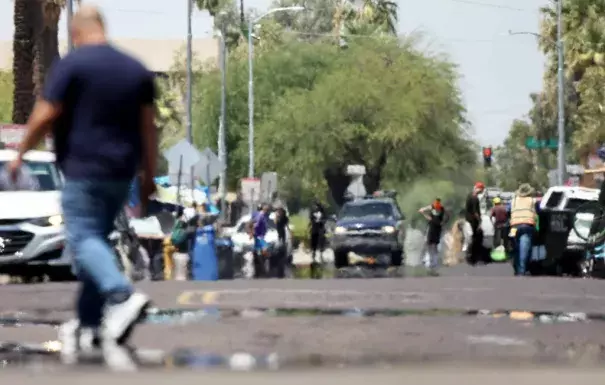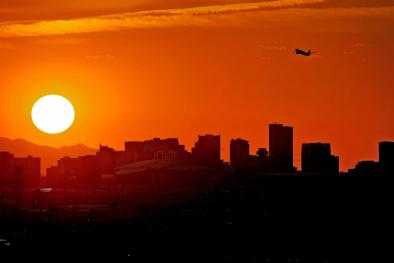Millions Live in ‘Urban Heat Islands’

Some 41 million Americans live in “urban heat islands,” areas where the effects of living in cities with lots of concrete and not so many trees can cause temperatures to rise dangerously, according to new analysis from Climate Central. The analysis found the difference between urban built areas experiencing the heat island effect and their more rural surroundings is 8°F higher or more, resulting in far higher risk of heat-related illness, or even death. Cities with taller buildings, more density, and fewer trees experienced the greatest heat island effect. The cities with an urban heat island effect of at least 8°F are: New York, Houston, Los Angeles, Dallas, Chicago, San Antonio, San Diego, Detroit, and Phoenix, but nearly all urban areas in the U.S. experienced at least some elevated temperature. In Detroit, New York, Dallas, New Orleans, and Houston, the heat island effect of at least 8°F impacts at least 70% of residents, and some neighborhoods representing at least 10% of Chicago, Washington, D.C., New York, and San Francisco experience at least 10°F higher temperatures. Previous research has shown that the urban heat island effect disproportionately impacts low-income areas and communities of color, as is the case with most climate impacts. Poorer areas and areas with greater proportions of people of color are more likely to have fewer trees and parks, while highways and other heavily-trafficked areas, as well as industrial areas, are systematically sited near communities of color. “People in urban heat islands experience the amplified effects of climate change, especially during summer heat streaks that force millions to face higher temperatures than their neighbors,” Jen Brady, Climate Central senior data analyst said. “Changes to the built environment can cool these neighborhoods, but until global temperatures stop rising, city residents will face increasingly steeper challenges to stay safe during periods of extreme heat.”
(Washington Post $, NPR, NBC, Axios, CBS, The Hill, E&E $)
To receive climate stories like this in your inbox daily click here to sign up for the Hot News Newsletter from Climate Nexus:
Related Content





